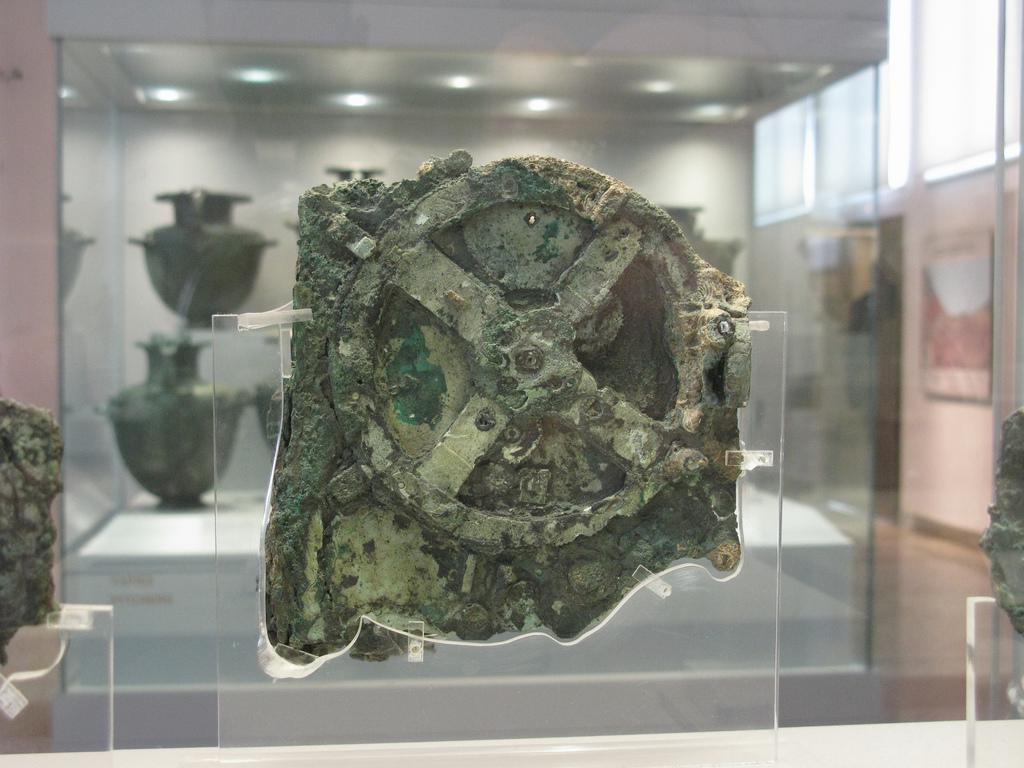Atlas Obscura on Slate is a blog about the world’s hidden wonders. Like us on Facebook and Tumblr, or follow us on Twitter.
In 1900, sponge divers off the Greek island of Antikythera discovered an ancient Roman shipwreck that had spilled ancient statues, pottery, jewelry, and other artifacts into the Mediterranean. Among these treasures, which were hauled to the surface over a period of several months, was a lump of corroded bronze adorned with a dial. This little green glob, dubbed the Antikythera mechanism, is the world’s oldest known analog computer.
When the treasures of the Antikythera wreck were brought to the National Archeological Museum of Athens in 1901, the mechanism did not receive a close analysis. The excited excavators were so wowed by the coins, glassware, and statues made of marble and bronze that the fragile green fragment escaped their attention. It wasn’t until the 1950s that physicist and science historian Derek de Solla Price took a close look at the Antikythera mechanism. His analysis continued into the 1970s, when he was able to estimate the date of its construction by blasting it with gamma radiography. What he found was astounding.
The mechanism was incredibly complex. It had used at least 30 gears to make a series of astronomical calculations, including the positions of the moon, sun, and planets, and the dates of upcoming eclipses. The intricacy of the device was even more impressive considering its age—Price estimated that the Antikythera mechanism was created circa 87 B.C., likely on the island of Rhodes. At that time, Rhodes was home to some exceptional astronomical minds, including a Greek astronomer and mathematician named Geminus. Price concurred that he or someone of his caliber was probably responsible for the Antikythera mechanism.

In the decades since Price’s analyses, the mechanism has undergone further scrutiny and resulting changes to its origin story. In 2008, members of the Antikythera Mechanism Research Project deciphered the names of the months written on the device’s dial and, after concluding they matched the calendar used in the Corinthian region of ancient Greece, suggested it was built there as early as 150 B.C.. They also discovered that a small dial on the mechanism was devoted to the locations of Panhellenic games, which included the ancient Olympics.
The tale of the Antikythera mechanism continues to shift and grow more complex. Just last week the New York Times reported on the results from a recent study devoted to the mechanism’s eclipse predictor dial. In the study, science historian Christián C. Carman and physicist James Evans determined that the device’s calendar likely began in 205 B.C., suggesting that the Antikythera mechanism is even older than previously believed. (Of course, it’s possible that its creator/s included historical data on the device, but given the mechanism is focused on predictions, the new date estimation is highly credible.)
Investigations continue into the anomalous Antikythera mechanism, which is still a solid 1,000 years ahead of any comparable computation device. The Hellenic Ministry of Culture and Sports has spearheaded further dives at the shipwreck site. The latest took place in October, and more are planned for 2015. Meanwhile, the corroded fragments of the mechanism still sit at the National Archeological Museum of Athens, waiting for that key bit of evidence that will unlock their full story.
Visit Atlas Obscura for more on the Antikythera mechanism.
Other old-timey instruments of science:
